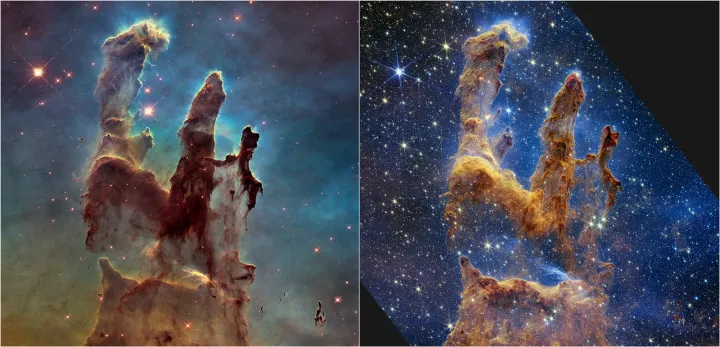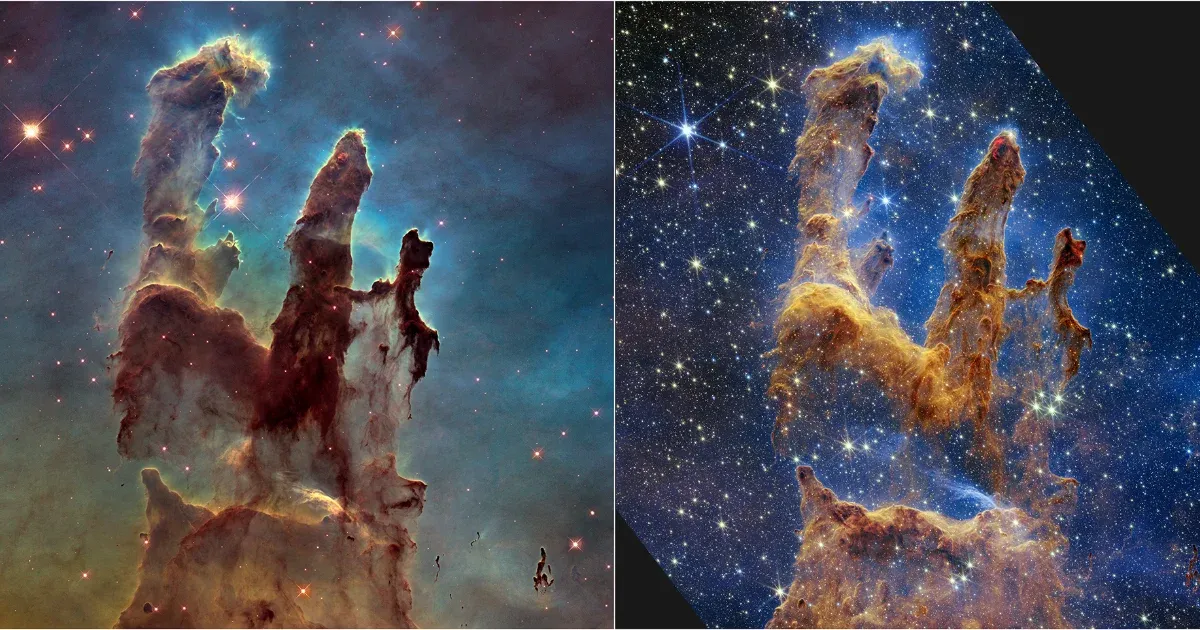The Pillars of Creation captured by the James Webb Space Telescope – Photo: NASA, ESA, CSA, STScI; Joseph DePasquale (STScI), Anton M. Koekemoer (STScI), Alyssa Pagan (STScI)
The James Webb Space Telescope took a picture of one of our solar system’s star cradles, the Pillars of Creation, in unprecedented detail.
The pillars are located in the Eagle Nebula, a cloud of dust and gas about 6,500 light-years from Earth. In the nebula, the Pillars of Creation form a larger structure, about five light years long.
The Eagle Nebula was discovered in 1745, but the Pillars of Creation did not become widely known until 1995, when the Hubble Space Telescope captured detailed images of it. Hubble imaged the Eagle Nebula in 2014, now in visible light, but James Webb’s current image helps us see the dust in the star-forming region more clearly. The thick, dusty brown columns are no longer so opaque and many more rising red stars are visible.
Despite the best picture, even the Webb cannot show the deeper layers of the universe. The interstellar medium seen in his images acts as a thick smoke or fog.

The Pillars of Creation left from Hubble 2014, right from James Webb this year – Photo: NASA, ESA, CSA, STScI; Joseph DePasquale (STScI), Anton M. Koekemoer (STScI), Alyssa Pagan (STScI)
New photos from Webb according to NASA is a great help to researchers in reviewing star formation models. By identifying much more precisely the stellar populations and the amount of gas and dust in the region, they can understand how stars form and erupt from these clouds over millions of years.


